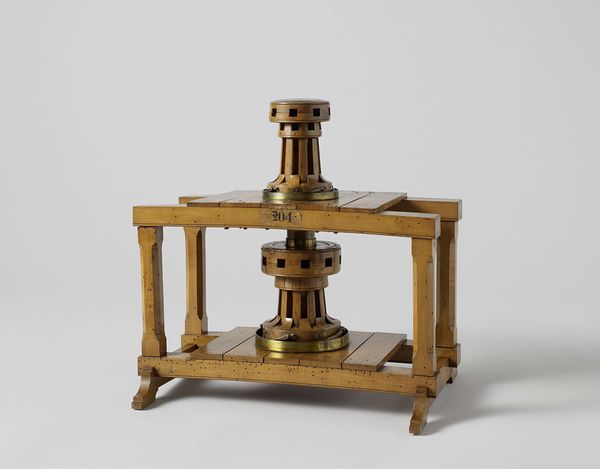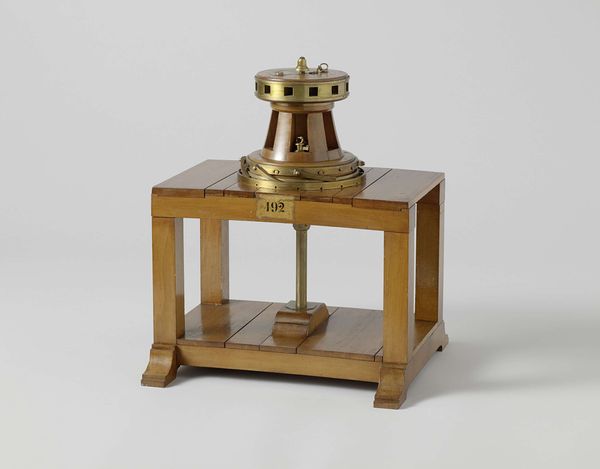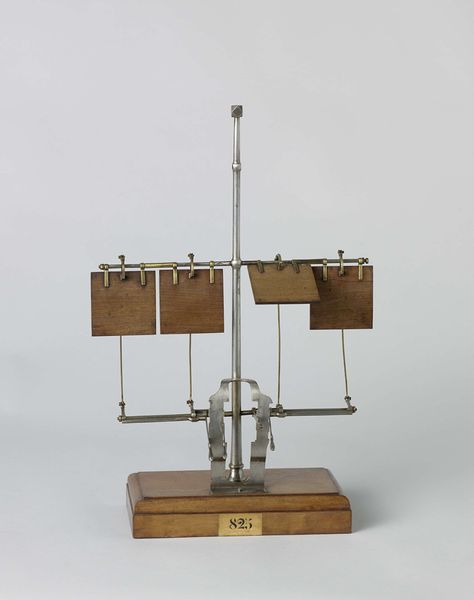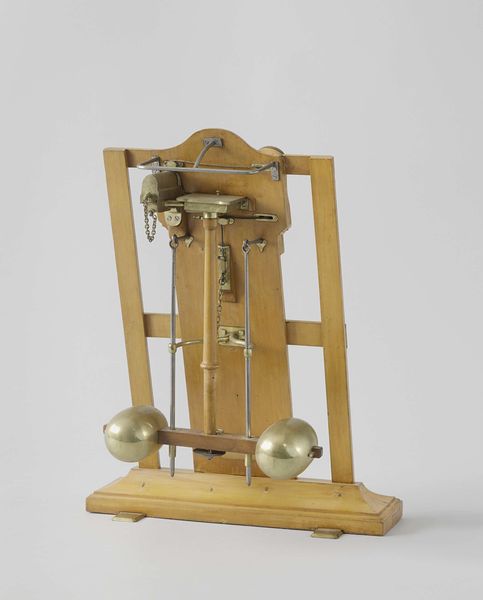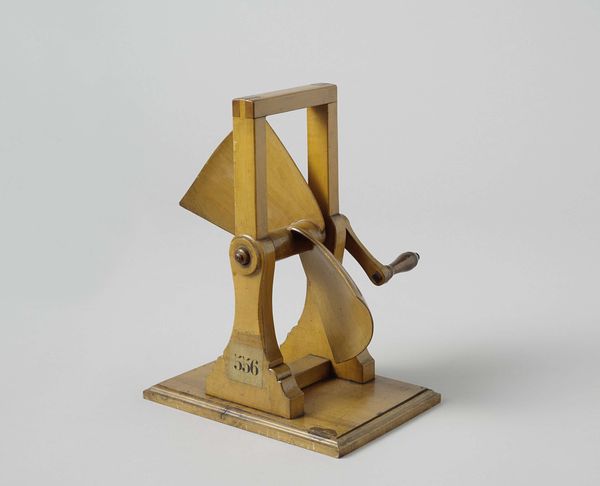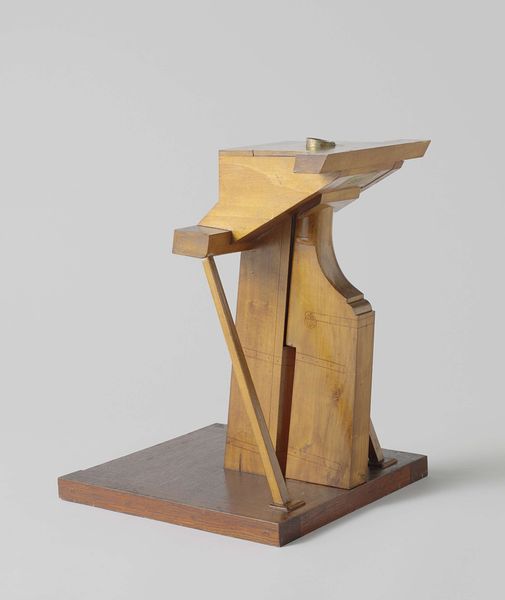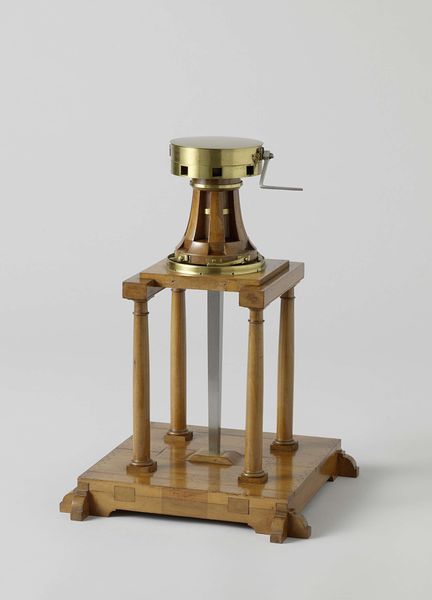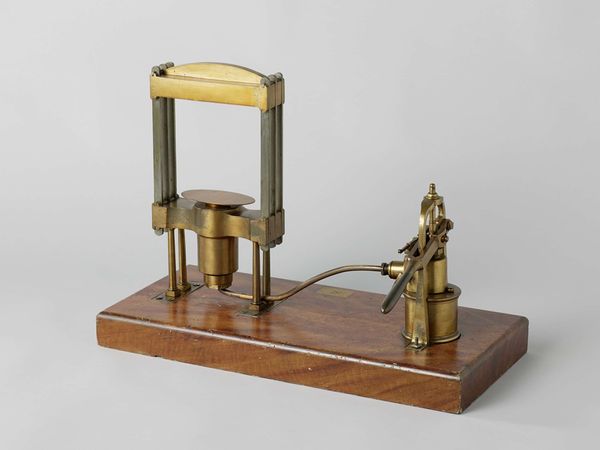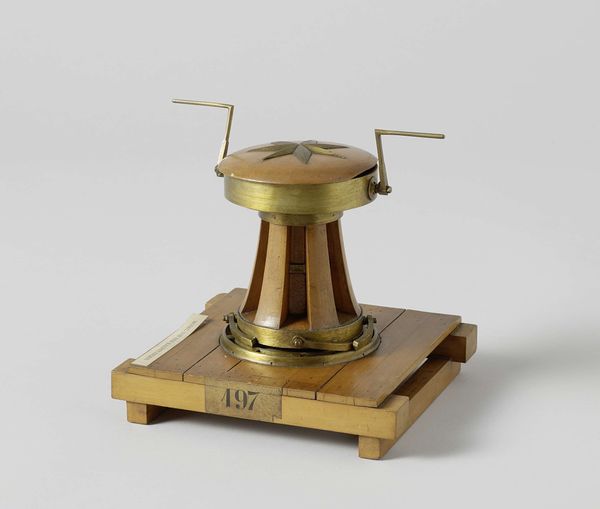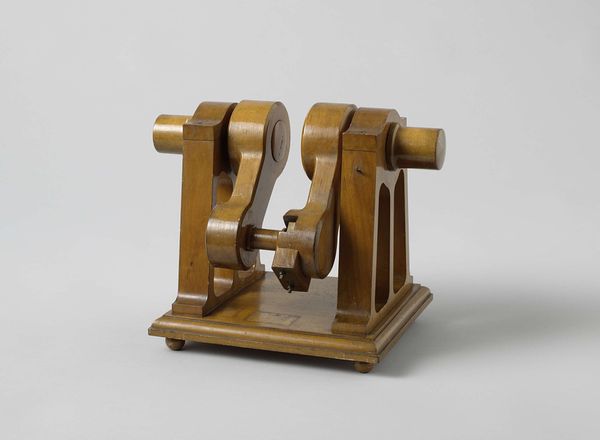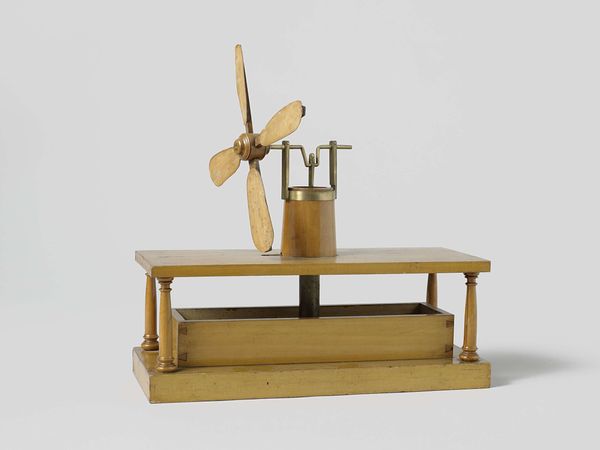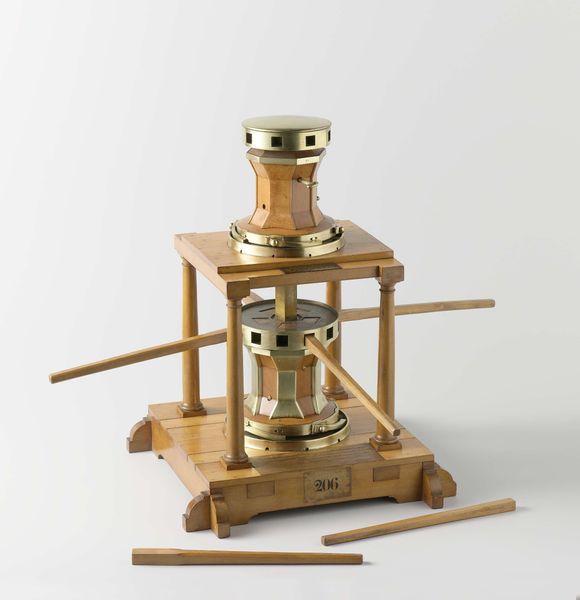
metal, sculpture, wood, architecture
#
metal
#
geometric
#
sculpture
#
wood
#
modernism
#
architecture
Dimensions: height 8.9 cm, width 44.2 cm, depth 39.7 cm
Copyright: Rijks Museum: Open Domain
This is Petrus van der Loo’s “Model Indicating the Headroom of the Rhine Bridge at Cologne,” a wooden and brass construction that gives us a sense of the engineering challenges of its day. The mid-19th century saw rapid industrialization in the Rhineland, and Cologne became a major hub. The Rhine was a crucial artery for trade and transport, so bridges like this one were vital. This model highlights the complexities of balancing efficient river passage for ships with the structural requirements of a bridge, which also needed to accommodate growing road and rail traffic. Van der Loo’s model is a functional object as much as a piece of art. It reflects the growing importance of technical expertise and the rise of engineering as a respected profession. It can be seen as a monument to the ingenuity required to reconcile the needs of commerce, transport, and urban development in a rapidly changing world. To understand this model fully, it's important to investigate archival sources and engineering treatises of the time. These resources can shed light on the bridge's design and its impact on Cologne's social and economic landscape.
Comments
No comments
Be the first to comment and join the conversation on the ultimate creative platform.
